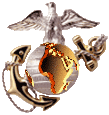Operation Cochise
To see events leading up to this Operation Click Here
While the Communist rocket gunners were annoying the Da Nang TAOR, intelligence agencies reported that the 3dNVA Regiment had moved into northern Quang Tin Province during late July. Intelligence also indicated the headquarters of the 1st VC Regiment also had moved from Quang Ngai Province to a new location east of Hiep Duc in the Que Son Basin. Reacting to these reports, on 9 August General Robertson reactivated Task Force X-Ray, again under the command of his assistant division commander, Brigadier General Foster C. LaHue. General LaHue received orders to strike the enemy wherever possible within the Que Son Basin and surrounding hills, with emphasis on the Hiep Duc area which intelligence officers believed contained the 2d NVA Division's headquarters and logistic base. For this operation, code named Cochise, General LaHue's Task Force X-Ray controlled the 1st and 3d Battalions of Colonel Stanley Davis' 5th Marines and Lieutenant Colonel Alfred I. Thomas' BLT 1 / 3 from SLF Alpha.
General LaHue's concept of operations for Cochise consisted of three phases. The first phase involved the insertion of the two 5th Marines battalions south of Nui Loc Son outpost between the tactical elements of the 2d NI/A Division and its suspected logistic base. The two battalions were to drive east toward friendly blocking positions and eliminate Communist tactical forces in the vicinity of the logistic installations. Phase II called for a helilift of two battalions into the suspected enemy base area, and the third phase a two-battalion sweep from the Hiep Duc region northeast to Que Son.
South of the Cochise area of operation the 2d ARVN Division was about to conduct companion operation Lien Ket 112; its concept resembled Cochise. Two ranger battalions were to be helilifted into landing zones southeast of Hiep Duc and sweep eastward, while three battalions of the 6th ARVN Regiment occupied blocking positions west of Tam Ky. Both operations began early on the morning of 11 August.
The ARVN rangers made the first significant con tact. On the morning of the 12th, three battalions of the 21st NI/A Regiment attacked the rangers. Heavy fighting continued throughout the day and by 1700 the rangers reported heavy casualties. Dangerously low on ammunition, with darkness approaching, and with no sign of a letup on the part of the enemy, the rangers requested an emergency re-supply. At 1730, a CH-46 from HMM-165, accompanied by two UH- lE gunships from VMO-6 arrived overhead with the badly needed ammunition. The gunships scouted the intended landing zone and reported that the CH-46 could not land in the contested zone. The pilot, Captain Jack H. McCracken, well aware of what would happen to the rangers without ammunition decided to try to deliver his cargo anyway. He ordered his crew chief, Corporal James E. Bauer, to stack the ammunition on the rear ramp. Captain Mc Cracken nosed over his helicopter and raced for the landing zone. McCracken then hovered 30 feet over the zone, and Corporal Bauer lowered the ramp and most of the ammunition dropped into the zone. While repeated enemy small arms hits shook the helicopter, Corporal Bauer kicked our the rest of the ammunition. As the last box dropped, enemy bullets severely damaged the helicopter, but McCracken's re-supply permitted the rangers to continue the battle. At 2300, the NVA units finally pulled back, leaving 197 bodies behind. The ranger losses also had been heavy, 81 killed and 153 wounded.
During the next three days, there were numerous encounters with small VC elements. On the night of 16 August, enemy units twice attempted to infiltrate BLT 1 / 3's night positions, but turned back in the face of small arms and artillery fire, leaving 36 bodies behind. The next morning, Lieutenant Colonel Joseph A. Nelson, commanding officer of VMO-6, in a UH-1E gunship, was escorting re-supply helicopters when he sighted more than 50 VC in the open. The VMO-6 commander expended all of his ordnance in the process of fixing the enemy group in place. He then directed a fixed-wing mission against the target. Meanwhile, a company of Lieutenant Colonel Charles B. Webster's 3d Battalion, 5th Marines moved into assault positions under cover of the air strike. After Webster's attack, a sweep of the area located 40 VC bodies. Total Marine casualties totaled only three wounded.
On the afternoon of the 18th, the first phase of Operation Cochise ended and Task Force X-Ray withdrew Webster's battalion. The next morning helicopters lifted the remaining two battalions into the Hiep Duc area for Phase II. Though the Marines anticipated a sizable enemy force in this region, there was little contact and the operation turned into a bush-beating effort. The final phase of Cochise began on the 25th and continued until 28 August. Enemy contact during the last three days consisted of sniper file and booby traps.
Final casualty results for Cochise included 156 enemy killed and 13 captured. Marine casualties were light in comparison, 10 killed and 93 wounded. Vietnamese Operation Lien Kit 112 accounted for 206 NVA killed, 12 prisoners, and 42 weapons seized. ARVN losses were more severe than Marine casualties during Cochise, 83 killed, 174 wounded, and 3 missing.
Although these operations forced a major portion of the 2d NI/A Division to withdraw, III MAF had no illusions of the enemy abandoning the densely populated, rice-bearing lands of the Que Son Basin. Cochise and Lien Ket 112 had been tactical victories, but the 2d NVA Division had suffered only a reverse, not a defeat.

